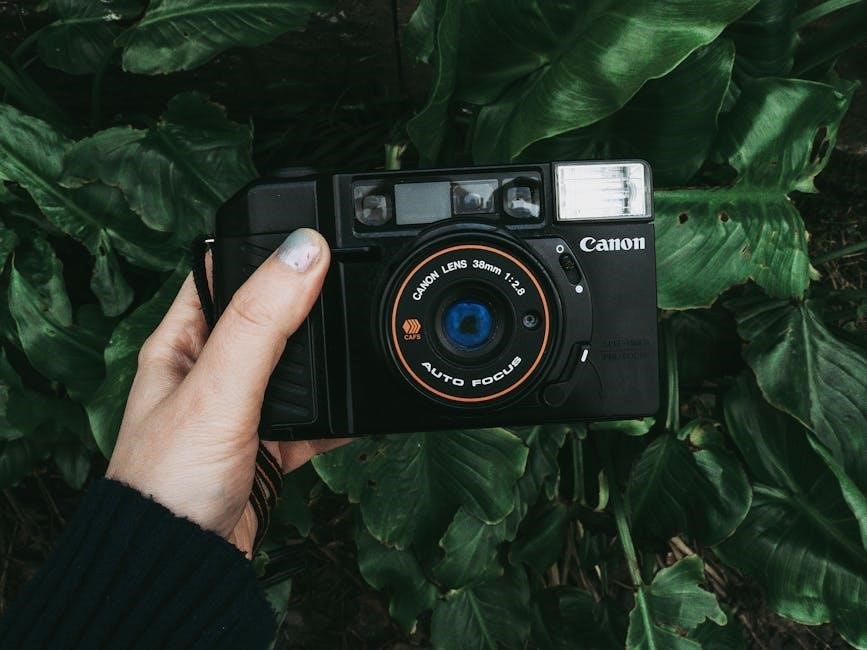canon 80d manual
Canon EOS 80D Manual: A Comprehensive Guide
Welcome to the ultimate resource for mastering your Canon EOS 80D! This guide is designed to provide you with a structured approach to understanding and utilizing every feature of your camera. From basic operation to advanced techniques‚ we’ll cover it all. This comprehensive guide will enhance your photography skills.
The Canon EOS 80D is a versatile digital single-lens reflex camera that stands as a significant upgrade from its predecessor‚ offering a compelling blend of performance and features for both amateur and experienced photographers. Introduced by Canon‚ it quickly gained recognition for its improved sensor‚ enhanced autofocus system‚ and user-friendly design.
At its core‚ the EOS 80D boasts a 24.2-megapixel APS-C CMOS sensor paired with a DIGIC 6 image processor. This combination allows for capturing high-resolution images with exceptional detail‚ vibrant colors‚ and minimal noise‚ even in challenging lighting conditions. The camera’s ISO range of 100-16000‚ expandable to 25600‚ further contributes to its low-light capabilities;
Beyond image quality‚ the EOS 80D excels in its autofocus performance‚ featuring a 45-point all cross-type AF system. This sophisticated system ensures fast and accurate focusing across a wide area of the frame‚ making it ideal for capturing fast-moving subjects. Whether you’re shooting sports‚ wildlife‚ or portraits‚ the EOS 80D’s autofocus system delivers reliable results.
Furthermore‚ the camera incorporates intuitive controls‚ a vari-angle touchscreen LCD‚ and built-in Wi-Fi with NFC‚ providing seamless connectivity and enhanced usability. The EOS 80D empowers photographers to unleash their creativity.
Key Features of the Canon EOS 80D
The Canon EOS 80D is packed with features designed to elevate your photography experience. At the heart of this camera lies its 24.2-megapixel APS-C CMOS sensor‚ delivering images with exceptional clarity and detail. This sensor‚ coupled with the DIGIC 6 image processor‚ ensures vibrant colors and minimal noise‚ even in low-light conditions‚ thanks to the ISO range of 100-16000‚ expandable to 25600.
One of the standout features is the 45-point all cross-type autofocus system‚ providing fast and accurate focusing across a wide area of the frame. This system is particularly effective for capturing moving subjects‚ ensuring sharp and clear results every time. The EOS 80D also boasts a vari-angle touchscreen LCD‚ offering flexibility in framing shots from various angles.
Connectivity is seamless with built-in Wi-Fi and NFC‚ allowing for easy sharing of images and remote camera control via smartphones or tablets. The camera’s advanced video capabilities include Full HD recording at 60fps‚ complete with Dual Pixel CMOS AF for smooth and precise focusing during video capture.
Furthermore‚ the EOS 80D features a durable construction and intuitive controls‚ making it a reliable and user-friendly tool for photographers of all skill levels. The camera empowers users to explore their creative potential.
Understanding the Camera’s External Controls
The Canon EOS 80D boasts a user-friendly design with a variety of external controls that provide quick access to essential settings. Familiarizing yourself with these controls is crucial for efficient operation and creative flexibility. On the top panel‚ you’ll find the Mode Dial‚ allowing you to switch between various shooting modes such as Auto‚ Program‚ Aperture Priority‚ Shutter Priority‚ Manual‚ and custom modes.
Adjacent to the Mode Dial is the Main Dial‚ used for adjusting settings like aperture‚ shutter speed‚ or menu options. The Quick Control Dial on the rear of the camera offers another way to navigate menus and change settings quickly. The multi-controller‚ also on the rear‚ enables precise selection of focus points and menu items.
Dedicated buttons for ISO‚ metering mode‚ AF mode‚ and white balance provide instant access to these critical settings. The viewfinder offers a clear view of the scene‚ with information displayed along the bottom‚ including aperture‚ shutter speed‚ and ISO. The lens mount features a lens release button for easy lens changes.
Understanding the placement and function of these external controls is essential for taking full advantage of the EOS 80D’s capabilities and capturing the perfect shot in any situation.
Basic Operation: Quick Start Guide
Get ready to capture stunning images with your Canon EOS 80D! This quick start guide will walk you through the fundamental steps to get you shooting in no time. First‚ insert a charged battery and an SD card into their respective slots. Next‚ attach a lens to the camera body by aligning the red dot on the lens with the red dot on the camera and twisting until it clicks.
Turn the camera on using the power switch. Set the Mode Dial to “Auto” for a fully automatic shooting experience or choose a scene mode that matches your subject. Frame your shot using the viewfinder or the LCD screen in Live View mode.

Press the shutter button halfway to focus on your subject. Once focused‚ press the shutter button fully to capture the image. Review your photo on the LCD screen by pressing the playback button. Adjust settings like ISO‚ white balance‚ and image quality through the Quick Control Dial and menu system as you become more comfortable.
Experiment with different shooting modes and settings to discover the full potential of your EOS 80D. With a little practice‚ you’ll be capturing beautiful photos in no time! This quick start guide is your first step toward mastering your camera.

Advanced Shooting Modes
Unlock the full creative potential of your Canon EOS 80D by exploring its advanced shooting modes. These modes offer greater control over your camera’s settings‚ allowing you to capture images that perfectly match your artistic vision. Dive into Aperture Priority (Av) mode‚ where you control the aperture to adjust depth of field‚ blurring backgrounds or ensuring sharpness throughout the scene.
Switch to Shutter Priority (Tv) mode to control the shutter speed‚ freezing fast action or creating motion blur. Master Manual (M) mode for complete control over both aperture and shutter speed‚ giving you ultimate creative freedom. Experiment with Bulb mode for long exposures‚ perfect for capturing light trails or nighttime landscapes.
Utilize the custom shooting modes (C1‚ C2) to save your favorite settings for quick access. Explore the benefits of HDR mode for capturing scenes with high dynamic range. With these advanced shooting modes‚ you can fine-tune your camera’s performance to suit any situation‚ from portraiture to sports photography.
Take your photography to the next level by understanding and utilizing these powerful tools. The Canon EOS 80D empowers you with the flexibility and control needed to express your unique perspective.
Menu Functions: Navigating the Settings

The Canon EOS 80D boasts an extensive menu system‚ providing access to a wide array of settings that allow you to fine-tune your camera’s performance. Understanding how to navigate these menus is crucial for maximizing your shooting experience. Begin by pressing the “Menu” button on the back of your camera to access the main menu screen.
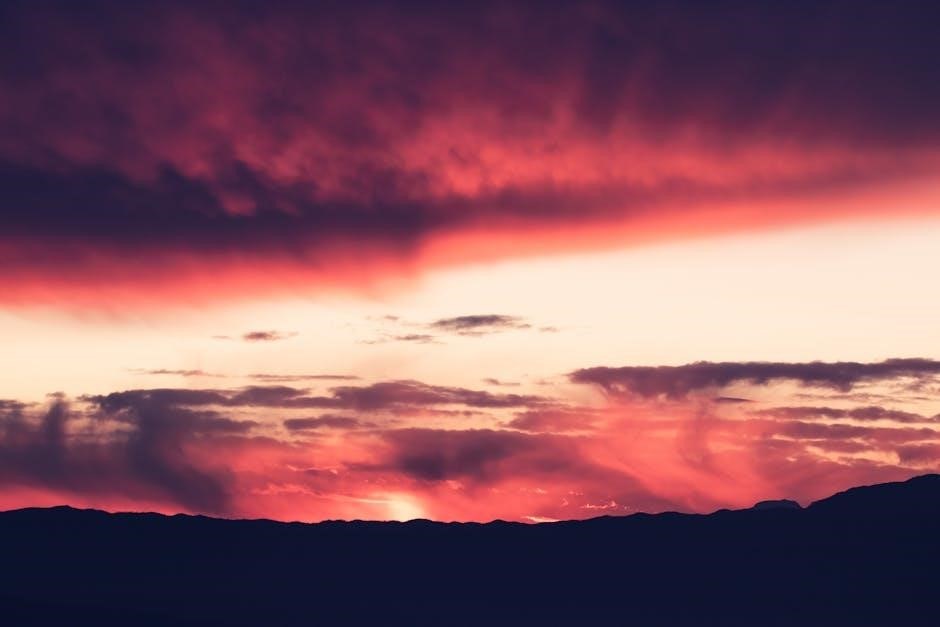
The menu is organized into several tabs‚ including Shooting‚ Playback‚ Setup‚ Custom Functions‚ and My Menu. Use the multi-controller or the Quick Control Dial to navigate between tabs and select specific menu items. Within each tab‚ you’ll find a variety of settings that control different aspects of your camera’s operation. For example‚ the Shooting tab allows you to adjust image quality‚ white balance‚ ISO settings‚ and more.
The Playback tab lets you review and manage your photos and videos. The Setup tab contains settings related to the camera’s display‚ sound‚ and connectivity options. The Custom Functions tab allows you to personalize your camera’s controls and behavior. Finally‚ the My Menu tab lets you create a customized menu with your most frequently used settings for quick access.
By mastering the menu functions‚ you can tailor your EOS 80D to perfectly suit your individual shooting style and preferences.
Custom Settings: Personalizing Your Camera
The Canon EOS 80D offers a wealth of custom settings‚ allowing you to tailor the camera’s operation to your specific needs and preferences. These settings‚ accessible through the Custom Functions (C.Fn) menu‚ provide a powerful way to personalize your shooting experience.
One key area of customization is button assignment. You can reconfigure the function of many buttons on the camera body‚ such as the AF-ON button‚ the SET button‚ and the depth-of-field preview button‚ to perform different tasks. For example‚ you might assign the AF-ON button to initiate back-button focusing‚ separating focusing from the shutter release.
Another important custom setting is the ability to adjust autofocus behavior. You can fine-tune the sensitivity‚ tracking sensitivity‚ and acceleration/deceleration tracking of the autofocus system to optimize it for different shooting scenarios. This is particularly useful for sports and wildlife photography‚ where fast and accurate autofocus is essential.
Furthermore‚ you can customize the information displayed in the viewfinder and on the LCD screen. You can choose to display or hide various indicators‚ such as the grid lines‚ electronic level‚ and histogram‚ depending on your preferences. By exploring and experimenting with the custom settings‚ you can create a camera setup that perfectly matches your individual shooting style.
Wi-Fi and Wireless Functionality
The Canon EOS 80D boasts integrated Wi-Fi and wireless capabilities‚ enabling seamless connectivity with smartphones‚ tablets‚ computers‚ and other compatible devices. This functionality opens up a range of possibilities‚ from remote shooting to instant image sharing.
With the Canon Camera Connect app‚ available for both iOS and Android‚ you can remotely control your 80D from your smartphone or tablet. This includes adjusting camera settings such as aperture‚ shutter speed‚ ISO‚ and white balance‚ as well as triggering the shutter release. Remote shooting is particularly useful for self-portraits‚ group photos‚ and wildlife photography.
The Wi-Fi connectivity also allows you to transfer images and videos wirelessly to your smartphone or tablet for easy sharing on social media or cloud storage services. You can select individual files or transfer entire folders‚ streamlining your workflow.
Furthermore‚ the 80D supports wireless printing to compatible printers‚ allowing you to create instant prints without the need for a computer. You can also connect the camera to a computer via Wi-Fi to transfer files or control the camera remotely using Canon’s EOS Utility software. Setting up the Wi-Fi connection is straightforward‚ with options for connecting to existing networks or creating an ad-hoc connection.
Troubleshooting Common Issues
Even with a robust camera like the Canon EOS 80D‚ users may encounter occasional issues. This section provides guidance on troubleshooting common problems. If your camera freezes or becomes unresponsive‚ try removing and reinserting the battery. Ensure the battery is fully charged‚ as low battery power can cause malfunctions.
If you encounter error messages on the LCD screen‚ consult the camera’s manual for specific explanations and solutions. Error messages often indicate issues such as memory card errors‚ lens communication problems‚ or internal malfunctions. For memory card errors‚ try using a different card or formatting the existing card within the camera.
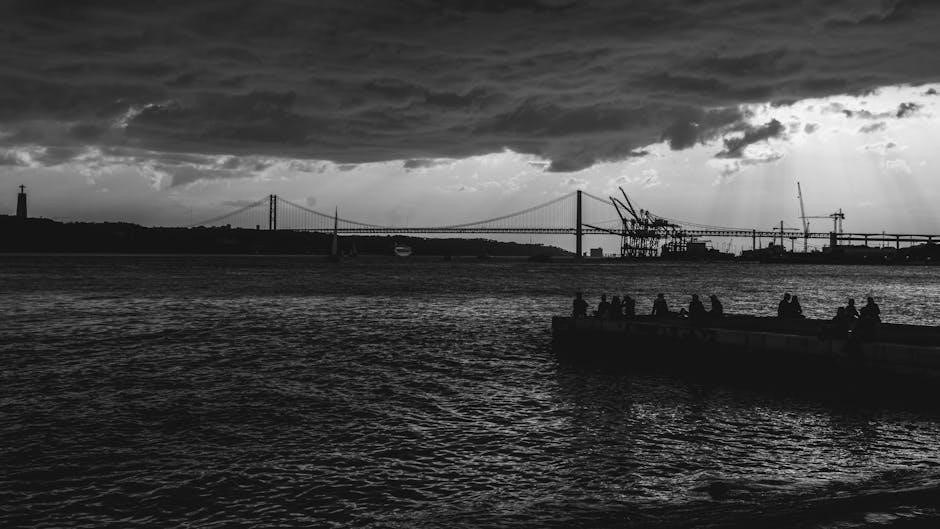
If your images appear blurry‚ check your focus settings and ensure the lens is clean. Insufficient lighting can also lead to blurry images‚ so consider increasing the ISO or using a wider aperture. If the autofocus is not working correctly‚ try switching to manual focus mode to isolate the problem.
If you are having trouble connecting to Wi-Fi‚ double-check your network settings and ensure the camera is within range of the wireless router. Resetting the camera’s network settings to default can also resolve connectivity issues. If these steps don’t solve the problem‚ consult Canon’s support website for further assistance or consider contacting a qualified camera technician.

Firmware Updates: Keeping Your Camera Up-to-Date
Firmware updates are essential for maintaining the performance and stability of your Canon EOS 80D. These updates often include bug fixes‚ performance enhancements‚ and new features that improve the overall user experience. Canon regularly releases firmware updates for its cameras‚ so it’s crucial to stay informed and keep your camera up-to-date.
To check for available firmware updates‚ visit the official Canon support website and navigate to the EOS 80D support page. Here‚ you’ll find the latest firmware version available for download. Before proceeding with the update‚ carefully read the instructions provided by Canon.
The firmware update process typically involves downloading the firmware file to your computer‚ transferring it to a formatted SD card‚ and then inserting the SD card into your camera. Follow the on-screen prompts on the camera to initiate the firmware update.
During the update process‚ it’s crucial to ensure that the camera’s battery is fully charged and that the camera is not powered off or interrupted. A power interruption during the update can cause serious damage to the camera’s firmware. Once the update is complete‚ verify that the new firmware version is installed correctly in the camera’s menu. Regularly checking for and installing firmware updates is a simple yet effective way to ensure your Canon EOS 80D operates at its best.
Compatible Lenses and Accessories
The Canon EOS 80D is a versatile camera that works with a wide array of lenses and accessories‚ allowing you to tailor your setup to your specific shooting needs. The camera utilizes the Canon EF and EF-S lens mounts‚ providing access to a vast selection of lenses‚ from wide-angle to telephoto‚ and everything in between;
EF lenses are designed for full-frame cameras but are also compatible with the 80D‚ while EF-S lenses are specifically designed for APS-C sensor cameras like the 80D‚ offering a more compact and affordable option. Some popular lens choices for the 80D include the EF-S 18-135mm f/3.5-5.6 IS USM kit lens‚ which provides a versatile zoom range for everyday shooting‚ and the EF 50mm f/1.8 STM lens‚ a fantastic prime lens for portraits and low-light photography.
In addition to lenses‚ the EOS 80D is compatible with a range of accessories that can enhance your shooting experience. These include external flashes‚ such as the Canon Speedlite series‚ which provide more powerful and versatile lighting options‚ remote shutters for minimizing camera shake during long exposures‚ and external microphones for improved audio quality during video recording.
Exploring the available lens and accessory options is a great way to unlock the full potential of your Canon EOS 80D and customize it to suit your individual photographic style.

Downloading the PDF Manual
Accessing the PDF version of the Canon EOS 80D manual is a straightforward process‚ offering you a convenient way to have all the camera’s information at your fingertips‚ whether you’re online or offline. The primary source for downloading the manual is the official Canon website‚ specifically the support section for the EOS 80D.
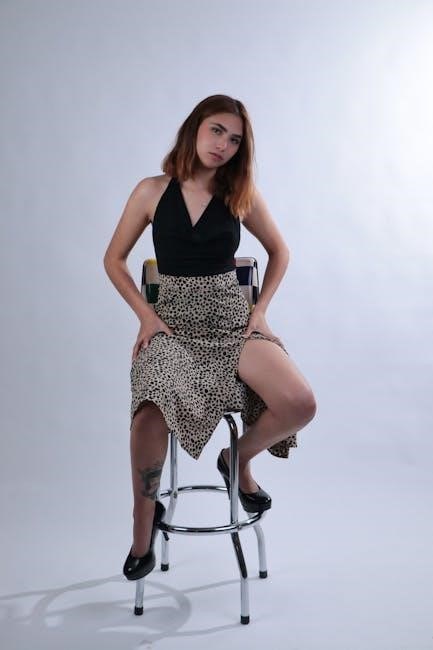
To locate the manual‚ navigate to Canon’s website and search for the EOS 80D support page. Here‚ you’ll find a variety of resources‚ including drivers‚ software updates‚ and of course‚ the user manual. The manual is typically available in multiple languages‚ so be sure to select the version that suits your needs.
Once you’ve found the correct manual‚ simply click on the download link. The manual will be downloaded as a PDF file‚ which can be opened on any computer‚ tablet‚ or smartphone with a PDF reader installed. The PDF format allows you to easily search for specific topics‚ zoom in on details‚ and even print out sections for quick reference in the field.
Having the PDF manual readily available is an invaluable asset‚ especially when you’re exploring new features or troubleshooting issues. It ensures that you always have a comprehensive guide to your Canon EOS 80D.
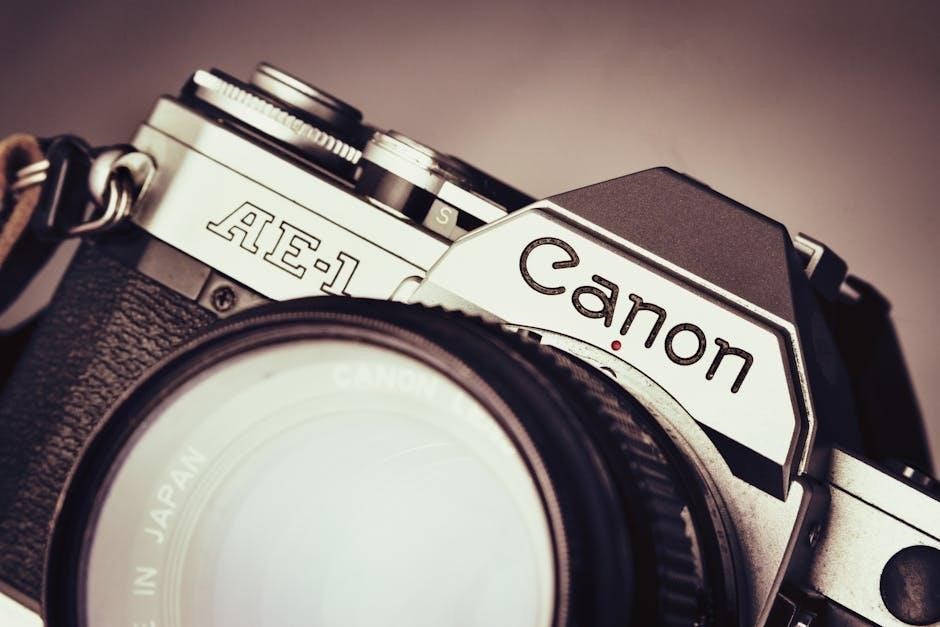
Resources for Further Learning
Beyond the official Canon EOS 80D manual‚ a wealth of resources exists to deepen your understanding and mastery of this versatile camera. Online platforms such as YouTube offer countless tutorials and reviews‚ providing visual demonstrations of camera features and shooting techniques. Look for channels dedicated to photography or those specifically covering the EOS 80D.
Photography websites and blogs are another excellent source of information. Many sites offer detailed articles‚ comparisons‚ and tips for using the EOS 80D in various shooting scenarios. Online forums and communities dedicated to Canon cameras can provide valuable insights and allow you to connect with other users‚ ask questions‚ and share your experiences.
Consider exploring online courses and workshops focusing on photography or the EOS 80D specifically. These courses often provide structured learning paths‚ covering topics such as camera settings‚ composition‚ and post-processing.
Books and e-books dedicated to the Canon EOS 80D can also be helpful. These resources often delve into specific aspects of the camera in great detail. Remember to experiment and practice regularly to reinforce what you learn from these resources.

